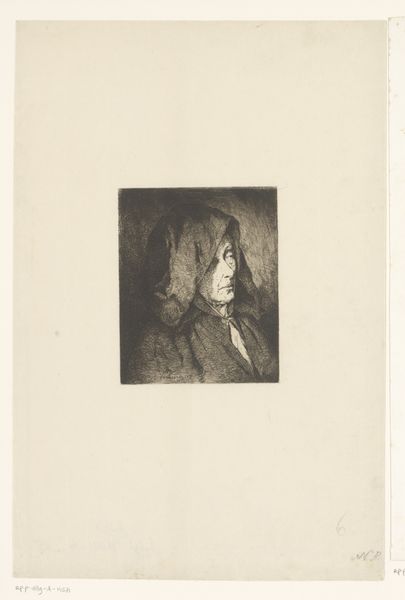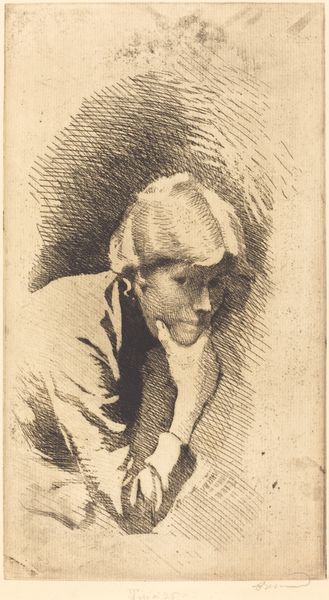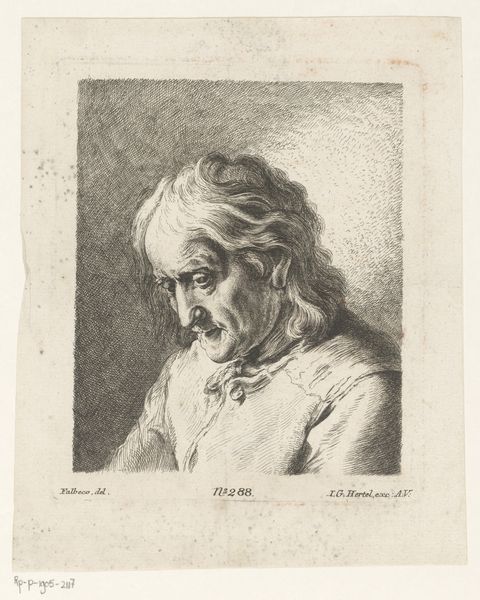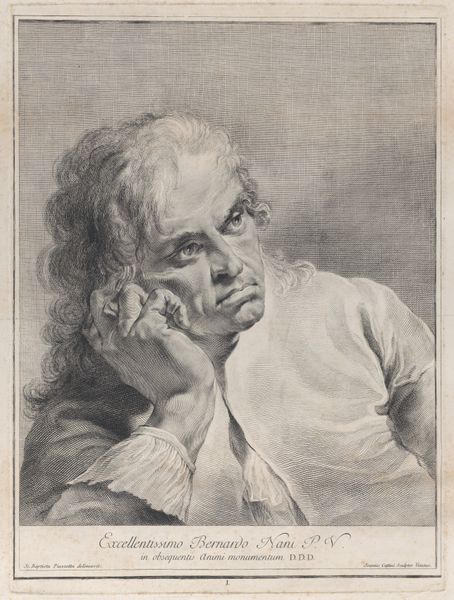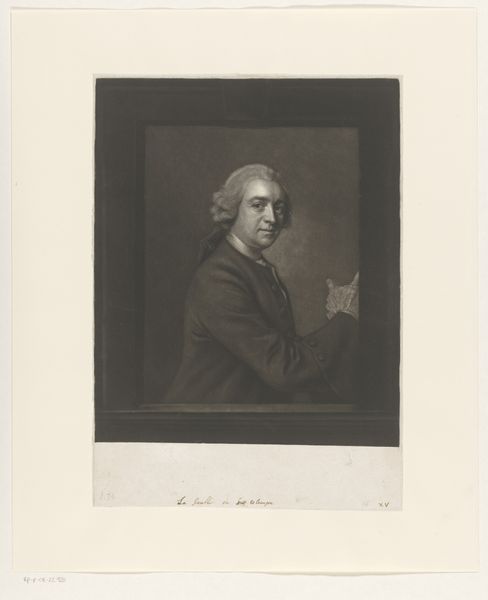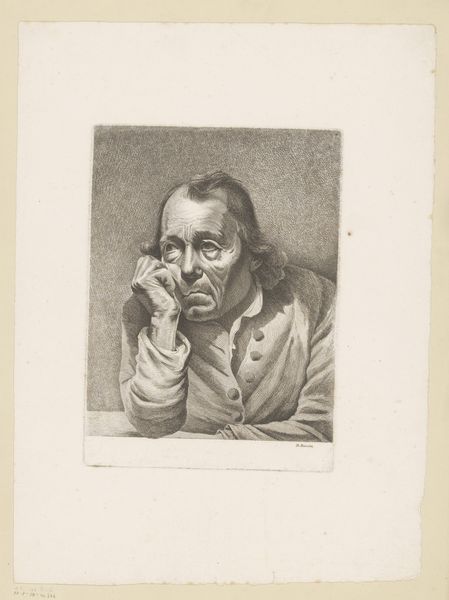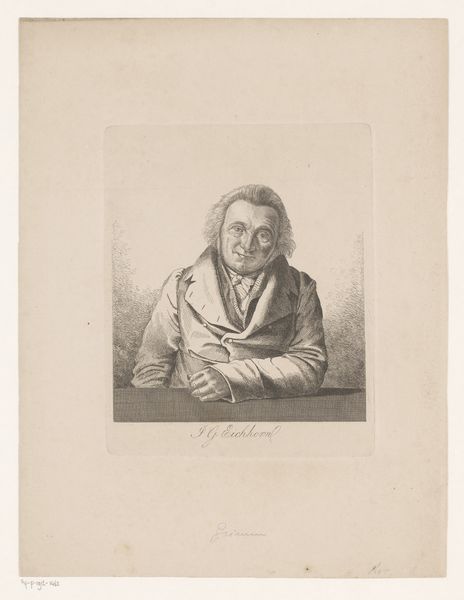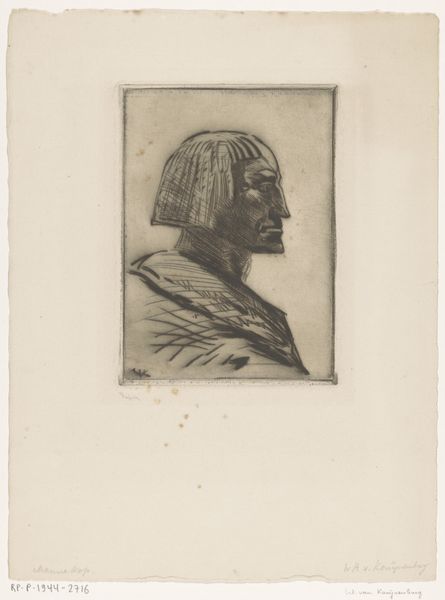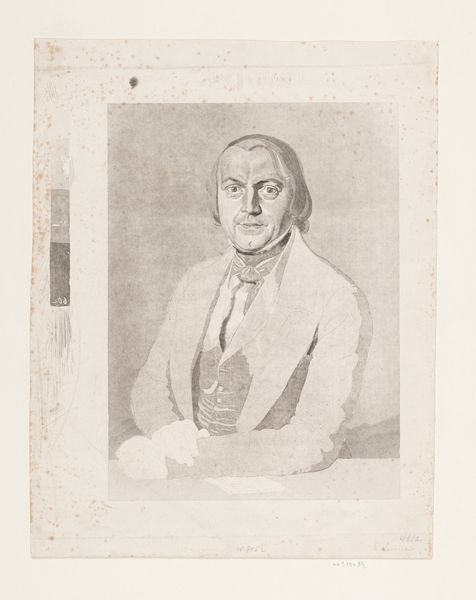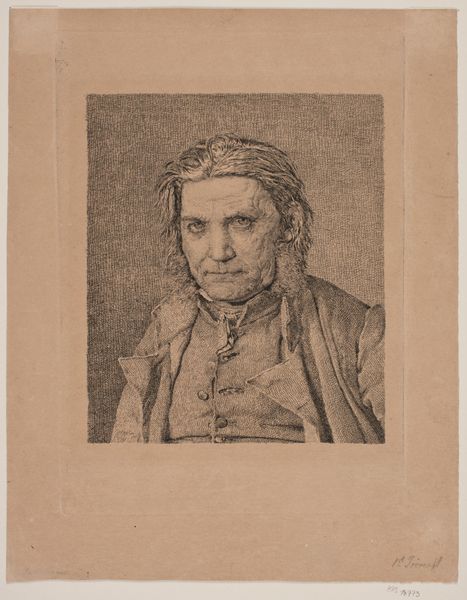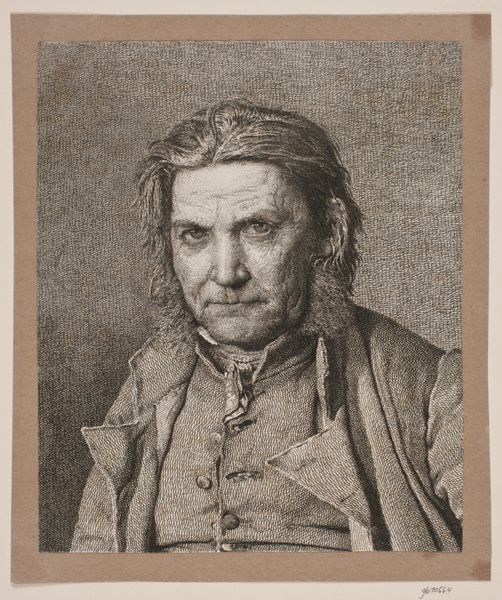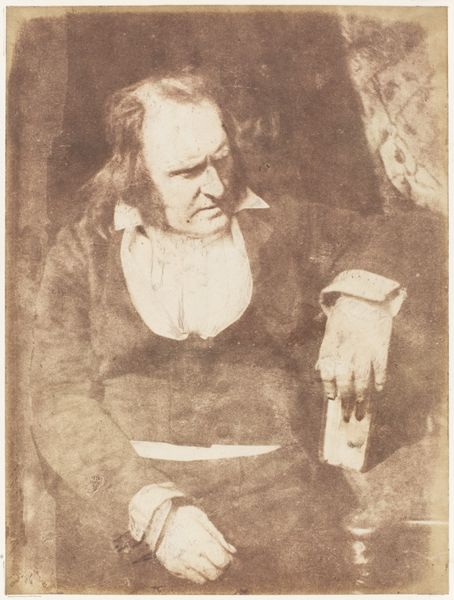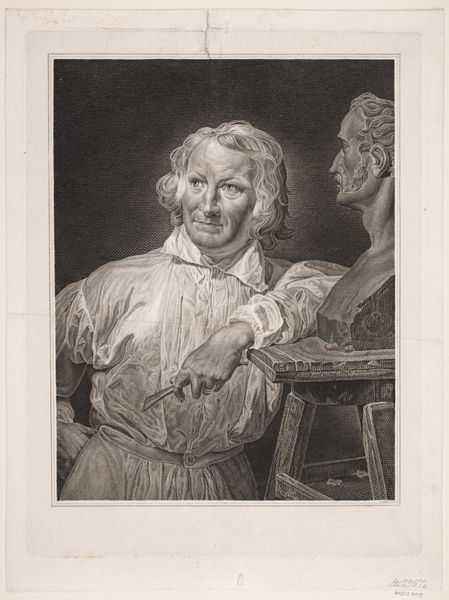
print, engraving
#
portrait
#
baroque
# print
#
portrait reference
#
italian-renaissance
#
remaining negative space
#
engraving
Dimensions: height 439 mm, width 431 mm
Copyright: Rijks Museum: Open Domain
Curator: Here we have Giovanni Marco Pitteri's print, made sometime between 1712 and 1786, entitled “Man met rozenkrans en stok, mogelijk Giambatista Albrizzi,” or “Man with rosary and stick, possibly Giambatista Albrizzi." It’s an engraving. Editor: It feels so immediate, doesn’t it? A kind of worn elegance captured in stark monochrome. The gaze is intense, almost… judgmental? Curator: As an engraving, it exists as a multiple, of course. We need to consider the economy of printmaking at the time, its relationship to portraiture as a form of both commemoration and commodity. The texture achieved through engraving is critical. Notice the way the light is caught. Editor: Absolutely, there’s something almost sculptural in the face, brought out by the contrast. I keep coming back to the hands. They tell a story of labor, maybe hardship. He holds a rosary, offering some spiritual grounding against his… let's call it ‘rustic’ reality. Curator: Indeed. It’s key to recognize the material conditions informing this kind of artwork. Engravings facilitated wider access to portraiture and artistic expression, impacting how images and ideas circulated during that period. The level of detail here speaks to highly specialized craft processes. Editor: You know, it’s fascinating to consider how we look at this image now, removed from that context. The rosary, the walking stick... these symbols read differently across centuries, almost more poignant in their obsolescence. Curator: Precisely, and the materials contribute to this enduring quality. The ink, the paper—these are remnants of a particular time and place. But the survival of this print allows us to explore continuities and discontinuities in cultural and artistic production. Editor: This image…it lingers. It invites you to fill in the gaps, imagine his story. It reminds me that everyone, famous or forgotten, leaves an impression somehow, etched in time, much like this engraving. Curator: Ultimately, by examining both its technical and social histories, we uncover new layers to its enduring presence, its cultural work.
Comments
No comments
Be the first to comment and join the conversation on the ultimate creative platform.
